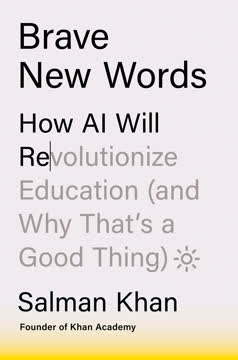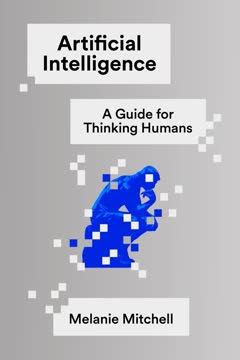가지 주요 요점
1. AI는 일, 학습, 인간 사고를 변화시키고 있다
인터넷이 지식과의 관계를 변화시켰다면, AI는 사고와의 관계를 변화시킬 것이다.
AI 혁명 진행 중. 인공지능은 일, 교육, 인간 인지의 모든 측면을 빠르게 변화시키고 있다. 이전의 기술 혁명이 주로 육체 노동에 영향을 미쳤던 것과 달리, AI는 법률, 의학, 교육과 같은 지식 기반 직업에 큰 변화를 가져올 준비가 되어 있다. 이 변화는 단순한 자동화에 그치지 않고, 우리가 정보를 처리하고 문제를 해결하며 창조하는 방식을 근본적으로 바꾸는 것이다.
광범위한 영향. AI의 영향력은 특정 직무 기능을 넘어 확장된다:
- 연구, 글쓰기, 소통 방식을 변화시키고 있다
- 다양한 분야에서 의사 결정 과정을 변화시키고 있다
- 창의성, 독창성, 인간 전문성에 대한 질문을 제기하고 있다
- 교육 관행과 학습 결과에 대한 재평가를 강요하고 있다
2. AI는 평균적인 작업을 생성하며 인간의 우수성 기준을 높이고 있다
AI는 새로운 C급 작업이다. 독특하지만 대부분 평균적이다.
기준 재정의. AI가 일관되게 평균 품질의 작업을 생성할 수 있는 능력은 산업과 교육 전반에 걸쳐 성과 기준의 재조정을 강요하고 있다. 이 변화는 중요한 의미를 가진다:
- 한때 수용 가능한 인간 성과로 여겨졌던 것이 이제는 미흡할 수 있다
- 고용주와 교육자는 인간의 기여에 대한 기대치를 높여야 한다
- 비판적 사고, 창의성, 감정 지능과 같은 독특한 인간 기술의 가치가 증가하고 있다
교육과 일에 대한 함의:
- 학생들은 경쟁력을 유지하기 위해 AI 수준의 성과를 넘어서는 목표를 가져야 한다
- 과제와 평가 방식은 고차원적 사고 기술을 평가할 수 있도록 재설계되어야 한다
- 직장에서는 직원들이 AI가 생성할 수 있는 것 이상의 가치를 더할 것으로 기대할 것이다
3. AI 리터러시는 모든 분야에서 미래 성공을 위한 필수 요소
AI 리터러시는 중요한 새로운 기술이다.
AI 역량의 보편적 필요. AI가 보편화됨에 따라, AI 도구를 효과적으로 사용하고 이해하는 능력은 모든 분야에서 핵심 역량이 되고 있다. 이 리터러시는 다음을 포함한다:
- AI의 능력과 한계를 이해하기
- 효과적인 프롬프트를 작성하고 AI 출력을 해석하는 방법 알기
- AI 사용에서의 잠재적 편향과 윤리적 고려 사항 인식하기
- AI가 생성한 콘텐츠를 비판적으로 평가하는 능력
교육에의 통합. 학생들이 AI 중심의 미래에 대비할 수 있도록:
- AI 리터러시는 컴퓨터 과학 과정뿐만 아니라 전 교과 과정에 통합되어야 한다
- 학생들은 다양한 맥락에서 AI 도구를 직접 경험해야 한다
- 윤리적 고려 사항과 책임 있는 AI 사용이 논의의 일부가 되어야 한다
4. AI 시대의 학문적 진실성을 유지하기 위한 새로운 전략 필요
탐지는 여전히 유용하지만, 우리의 주요 대응이 되어서는 안 된다.
탐지를 넘어. 부정행위 탐지에 초점을 맞춘 전통적인 학문적 진실성 접근 방식은 AI 시대에 점점 덜 효과적이 되고 있다. 새로운 전략이 필요하다:
- 독창적 사고와 인간 창의성의 가치를 강조하기
- AI를 활용하되 여전히 독특한 인간의 입력이 필요한 과제를 설계하기
- 최종 결과물뿐만 아니라 과정과 사고 기술에 집중하기
- 학문적 작업에서 적절한 AI 사용에 대한 명확한 정책 개발하기
평가 재고. 교육자들은 평가 방법을 조정해야 한다:
- 쉽게 AI가 복제할 수 있는 작업에서 벗어나기
- 더 많은 실시간, 대면 평가를 포함하기
- 학생의 성장과 과정을 보여주는 포트폴리오 기반 평가 사용하기
- 인간 상호작용을 강조하는 동료 검토 및 협력 프로젝트 구현하기
5. AI는 창의성과 문제 해결 능력을 향상시킬 수 있다
AI는 우리 모두를 더 창의적으로 만들 것이다.
창의적 파트너로서의 AI. AI는 인간의 창의성을 억제하는 것이 아니라 오히려 향상시킬 잠재력을 가지고 있다:
- AI는 방대한 양의 아이디어를 생성하여 인간의 정신적 장애물을 극복할 수 있다
- 예상치 못한 연결을 만들어내어 새로운 통찰을 불러일으킬 수 있다
- AI의 사회적 억제가 없기 때문에 더 비전통적인 아이디어를 제시할 수 있다
혁신을 위한 AI 활용:
- AI를 사용하여 다양한 가능성을 브레인스토밍하고 탐색하기
- AI가 생성한 아이디어를 인간의 판단과 다듬기와 결합하기
- AI를 활용하여 개념을 시각화하거나 디자인을 신속하게 프로토타입하기
- 창의적 장애물을 극복하거나 새로운 방향을 탐색하기 위해 AI를 활용하기
6. 효과적인 AI 사용은 명확한 프롬프트와 반복적인 개선이 필요하다
충분히 좋은 것은 끊임없이 변화하고 있다.
프롬프트의 기술. AI의 잠재력을 극대화하려면 효과적인 프롬프트를 작성하는 기술이 필요하다:
- 원하는 출력, 형식, 맥락에 대해 구체적으로 설명하기
- 관련 배경 정보와 제약 조건 제공하기
- 명확하고 모호하지 않은 언어 사용하기
반복적 과정. AI로부터 최상의 결과를 얻기 위해서는 종종 다음이 필요하다:
- 광범위한 프롬프트로 시작하고 초기 출력에 따라 개선하기
- AI 응답을 명확히 하거나 확장하기 위해 후속 질문하기
- 여러 AI 출력을 결합하여 더 포괄적인 결과 만들기
- AI가 생성한 콘텐츠를 인간이 선별하고 편집하기
7. AI 지원 교육은 과제와 평가의 재구성을 요구한다
모든 과제는 이제 AI 과제이다.
교육 과제 재고. 전통적인 과제와 평가는 다음과 같이 재설계되어야 한다:
- AI를 도구로 통합하되 그 사용을 방지하려고 하지 않기
- AI가 쉽게 복제할 수 없는 고차원적 사고 기술에 집중하기
- 정보의 적용, 분석, 종합을 강조하기
- 학생들이 AI가 생성한 콘텐츠를 비판적으로 평가하고 개선하도록 장려하기
새로운 과제 유형:
- AI와 인간 입력을 결합한 협력 프로젝트
- 개인의 사고를 보여주는 실시간, 수업 내 활동
- 학생들이 AI 사용과 의사 결정 과정을 설명해야 하는 과제
- 과정 개념을 새로운 실제 상황에 적용하는 프로젝트
8. AI 시대에는 동기 부여와 과정 중심 학습이 중요하다
나는 신경 쓰고, 할 수 있으며, 중요하다.
내재적 동기. AI가 많은 기본 작업을 수행할 수 있게 되면서, 학생 참여를 촉진하는 것이 더욱 중요해진다:
- 학습의 관련성과 개인적 가치를 강조하기
- 과제에서 자율성과 선택의 기회를 제공하기
- 학습 환경에서 소속감과 공동체 의식을 형성하기
과정에 집중. 결과에서 학습 과정으로 주의를 전환하기:
- 학생들이 문제 해결 단계를 문서화하도록 요구하여 사고를 가시화하기
- 메타인지 촉진을 위한 반성적 실천 사용하기
- 학습 전략에 대한 피드백을 제공하는 형성 평가 구현하기
- 완벽함보다 반복과 개선을 중시하는 과제 설계하기
9. AI 피드백과 역할 놀이가 새로운 교육 기회를 제공한다
AI는 또한 토론 파트너가 될 수 있다.
학습 보조자로서의 AI. 개인화된 학습 경험을 위해 AI를 활용하기:
- AI를 사용하여 학생 작업에 대한 즉각적이고 맞춤형 피드백 제공하기
- 개인의 학습 필요에 맞춰 조정되는 AI 기반 튜터링 시스템 만들기
- 언어 연습이나 시뮬레이션 대화를 위해 AI 활용하기
역할 놀이와 시뮬레이션. AI는 새로운 형태의 경험 학습을 가능하게 한다:
- 역사적 인물 인터뷰 또는 토론
- 시뮬레이션된 전문 시나리오 (예: 고객 상호작용, 윤리적 딜레마)
- 다양한 의사소통 스타일이나 문화적 맥락에서의 연습
- AI 기반 시뮬레이션을 통한 복잡한 시스템 탐색
10. 글쓰기 교육은 AI 도구를 책임감 있게 통합하도록 적응해야 한다
글쓰기는 AI가 가장 잘하는 것이며, AI를 능가할 수는 없다.
글쓰기 교육 재정의. AI가 텍스트 생성에 능숙해짐에 따라, 글쓰기 교육은 진화해야 한다:
- 비판적 분석, 논증, 종합과 같은 고차원적 기술에 집중하기
- 학생들이 브레인스토밍, 편집을 위해 AI를 효과적으로 활용하도록 가르치기
- 글쓰기에서 목소리, 스타일, 독창성의 중요성을 강조하기
- 더 많은 협력적이고 다중 양식의 글쓰기 프로젝트를 포함하기
윤리적 고려 사항. 글쓰기에서 AI의 윤리적 함의를 다루기:
- 학문적 글쓰기에서 적절한 AI 사용에 대한 명확한 지침 개발하기
- 학생들이 AI가 생성한 콘텐츠를 비판적으로 평가하고 사실 확인하도록 가르치기
- AI 사용에서 적절한 출처 표기와 투명성의 중요성을 강조하기
- AI가 생성한 텍스트의 사회적 함의 (예: 잘못된 정보, 진정성)에 대해 논의하기
마지막 업데이트 날짜:
FAQ
What's "Teaching with AI: A Practical Guide to a New Era of Human Learning" about?
- Overview: The book, authored by José Antonio Bowen and C. Edward Watson, explores the transformative impact of artificial intelligence (AI) on education, focusing on how AI is changing the way we think, teach, and learn.
- Structure: It is divided into three parts: Thinking with AI, Teaching with AI, and Learning with AI, each addressing different aspects of AI's integration into education.
- Purpose: The book aims to provide educators with practical guidance on leveraging AI to enhance teaching and learning while addressing ethical and equity concerns.
- Association: Published in association with the American Association of Colleges and Universities, it emphasizes the importance of AI literacy for both faculty and students.
Why should I read "Teaching with AI: A Practical Guide to a New Era of Human Learning"?
- Relevance: As AI becomes increasingly integrated into various aspects of life, understanding its impact on education is crucial for educators, students, and policymakers.
- Practical Guidance: The book offers actionable strategies and examples for incorporating AI into teaching practices, making it a valuable resource for educators looking to adapt to technological changes.
- Ethical Considerations: It addresses the ethical implications of AI in education, providing insights into how to use AI responsibly and equitably.
- Future Preparedness: Reading this book can help educators prepare students for a future where AI literacy is essential for success in the workforce.
What are the key takeaways of "Teaching with AI: A Practical Guide to a New Era of Human Learning"?
- AI Literacy: The book emphasizes the importance of AI literacy as a core skill for both educators and students, necessary for navigating the future job market.
- AI as a Partner: It highlights the potential of AI to enhance creativity, productivity, and learning when used as a collaborative tool rather than a replacement for human effort.
- Ethical Use: The authors stress the need for ethical considerations in AI use, advocating for policies that ensure equitable access and prevent misuse.
- Redefining Education: The book suggests that AI will fundamentally change educational practices, requiring a reevaluation of teaching methods, assessment strategies, and learning outcomes.
How does "Teaching with AI" suggest educators integrate AI into their teaching practices?
- AI-Assisted Tools: The book recommends using AI tools to automate routine tasks, such as grading and feedback, allowing educators to focus on more complex teaching activities.
- Customized Learning: It suggests leveraging AI to provide personalized learning experiences, adapting content and assessments to meet individual student needs.
- Creative Collaboration: Educators are encouraged to use AI as a partner in creative processes, helping students generate ideas and explore new perspectives.
- Ethical Discussions: The book advises incorporating discussions about AI ethics and implications into the curriculum to prepare students for responsible AI use.
What are the ethical considerations discussed in "Teaching with AI"?
- Bias and Equity: The book addresses concerns about AI perpetuating biases present in training data and emphasizes the need for equitable access to AI tools.
- Privacy Concerns: It highlights the importance of protecting student data and ensuring that AI systems are transparent about how data is used.
- Accountability: The authors discuss the need for clear policies on AI use in education, ensuring that students and educators understand their responsibilities.
- Misinformation Risks: The book warns about the potential for AI to generate misinformation and stresses the importance of teaching students to critically evaluate AI-generated content.
How does "Teaching with AI" address the issue of AI and cheating?
- Detection Challenges: The book acknowledges the limitations of AI detection tools and the potential for false positives, urging caution in their use.
- Redefining Cheating: It suggests that what is considered cheating may need to be reevaluated in the context of AI, focusing on the value of human effort and creativity.
- Preventive Strategies: The authors propose designing assignments that emphasize process and critical thinking, making it harder for students to rely solely on AI.
- Educational Integrity: The book emphasizes the importance of fostering a culture of integrity and transparency in AI use, encouraging students to disclose their use of AI tools.
What are some practical examples of AI tools mentioned in "Teaching with AI"?
- Research Tools: The book mentions tools like Consensus and Elicit, which connect to databases to provide accurate citations and synthesize research findings.
- Feedback Systems: AI can be used to provide immediate, personalized feedback to students, helping them improve their work in real-time.
- Creative Applications: Tools like Midjourney and Stable Diffusion are highlighted for their ability to generate creative content, such as images and designs.
- Administrative Support: AI can assist with administrative tasks, such as scheduling and organizing student interactions, freeing up educators' time for teaching.
How does "Teaching with AI" propose to redefine quality in education?
- AI as Baseline: The book suggests that AI-generated work should be considered the new baseline for average work, pushing students to exceed this standard.
- Higher Standards: It advocates for raising the bar on what is considered quality work, emphasizing critical thinking, creativity, and originality.
- Rubric Adjustments: Educators are encouraged to adjust grading rubrics to reflect the capabilities of AI, ensuring that human contributions are valued.
- Focus on Process: The book emphasizes the importance of assessing the process and effort behind student work, rather than just the final product.
What are the best quotes from "Teaching with AI" and what do they mean?
- "AI is going to change our relationship with thinking." This quote highlights the transformative impact of AI on cognitive processes, suggesting that AI will alter how we approach problem-solving and creativity.
- "What faculty call cheating, business calls progress." This statement reflects the differing perspectives on AI use, emphasizing the need to align educational practices with real-world applications.
- "AI literacy will need to include how to find the right AI for the job." This quote underscores the importance of teaching students to critically evaluate and select appropriate AI tools for specific tasks.
- "AI is a tool that can elevate the creativity and productivity of everyone." This highlights the potential of AI to enhance human capabilities, encouraging its use as a collaborative partner.
How does "Teaching with AI" suggest educators handle AI-generated content in student work?
- Transparency: The book advises requiring students to disclose their use of AI tools and to provide transcripts of AI interactions when submitting assignments.
- Process Documentation: It suggests asking students to document their writing process, including
리뷰
AI를 활용한 교육은 대체로 긍정적인 평가를 받고 있으며, 독자들은 교육에 AI를 통합하는 데 유용한 조언과 아이디어를 높이 평가하고 있다. 많은 이들이 이 책이 정보가 풍부하고 접근하기 쉽다고 느끼며, 교육자들에게 귀중한 통찰을 제공한다고 말한다. 이 책은 다양한 프롬프트와 사례로 찬사를 받고 있다. 그러나 일부 비평가들은 윤리와 개인 정보 보호 문제에 대한 논의가 부족하다고 지적하며, 몇몇 독자들은 교육에서 AI를 빠르게 도입하는 것에 대해 우려를 표명하기도 했다. 전반적으로 리뷰어들은 교육에서 AI의 증가하는 존재에 적응하는 데 있어 이 책이 제공하는 지침을 높이 평가하고 있다.
Similar Books













